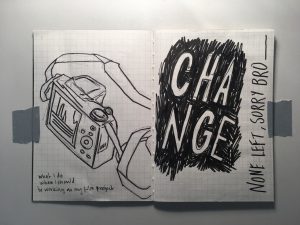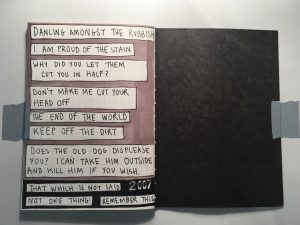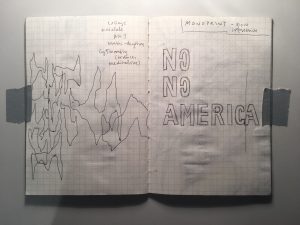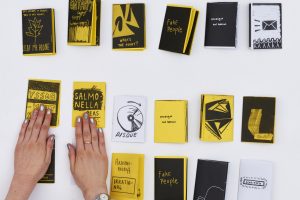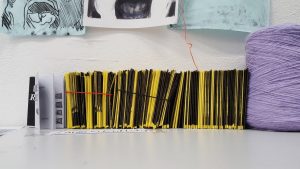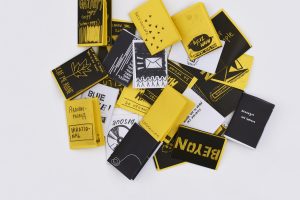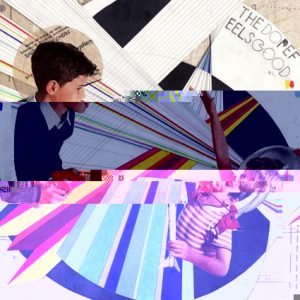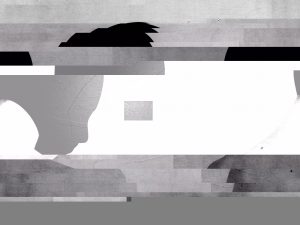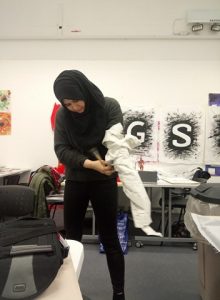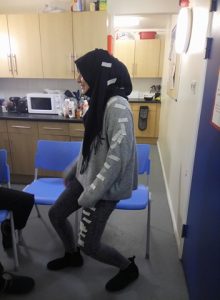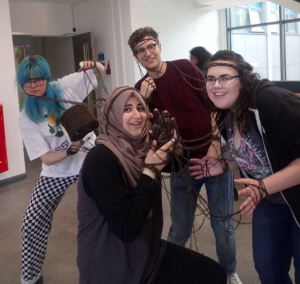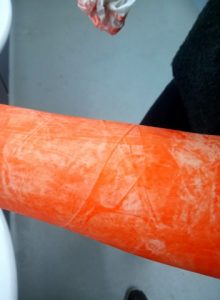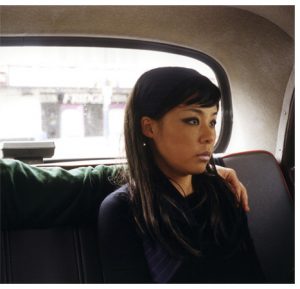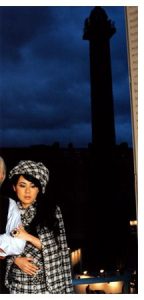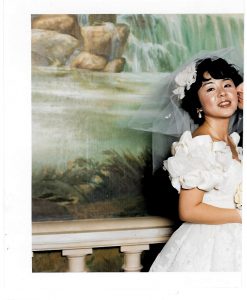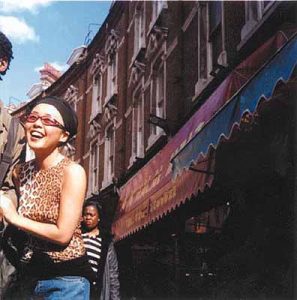For this task, the works I have chosen are some images from my A6 primary research sketchbook in which I jot down quick sketches and ideas. These are immediate, undeveloped, initial responses to any visual stimulus that I find interesting or sparks ideas in any way. They serve as a means of processing any information – visual, textual or otherwise.
I use the materials that I have to hand – masking tape, PVC tape, paper scraps, occasionally pencils, but mostly fine liners and markers for their distinctive graphic qualities.
I was inspired by Peter Driver’s talk on his artistic practice and the way in which he expanded his upbeat, positive small-scale print work in a conceptual manner to create the ‘March For Optimism’ through Winchester in 2014. In a similar manner, rather than physically enlarge the drawings by simply scaling them up, I have developed this further and enlarged the drawings conceptually, by extending this into my manifesto project.
In order to up-scale this work, I integrated the ideas and imagery gathered in my A6 sketchbooks – this took the form of a collective consisting of myself, Lauren Culloty and Poppy Ash, formed as a rejection of the Manifesto project – the AMP movement, in which we created over 400 zines (40 designs) and distributed them across Winchester.
I was able to expand on the simple ideas I had captured in my A6 sketchbooks and through the collaboration, contribute to develop this to take on a life of its own.

